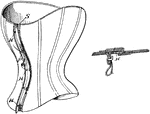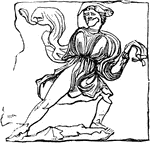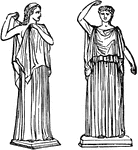Clipart tagged: ‘Underwear’

Corset Fastener
A corset is a garment worn to mold and shape the torso into a desired shape for aesthetic or medical…
Consumers' League Label
"The Consumer's League is trying to raise standards in relation to the sanitation of workrooms and shops…

Tunica
"Tunica, an under-garment. Greek. The chiton was the only kind of under-garment, worn by the Greeks.…

Tunica
"Tunica, an under-garment. Greek. The chiton was the only kind of under-garment, worn by the Greeks.…

